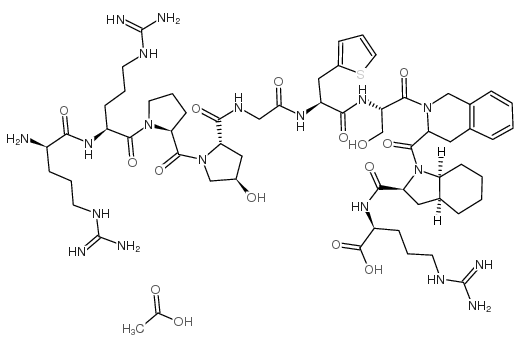Hereditary angioedema treatment options: the availability of new therapies.
Werner Aberer
Index: Ann. Med. 44(6) , 523-9, (2012)
Full Text: HTML
Abstract
Hereditary angioedema (HAE) is a potentially life-threatening autosomal dominant disease characterized by recurrent episodes of oedema, commonly occurring in the skin, abdomen, and upper respiratory tract. After many years during which limited treatment options were available, a range of newer therapies with proven efficacy have been approved in Europe by the European Commission for the treatment of HAE attacks. However, due to differing legislation and financial restrictions, these treatment options are not available in all countries. Home therapy and self-administration of treatment are recommended in order to minimize the burden of disease upon the patient, with the ideal treatment option being effective, well-tolerated, and easy to prepare and administer. Recently, the Hereditary Angioedema International Working Group (HAWK) consensus recommended early, on-demand treatment for HAE. This article reviews the current treatment options available, and considers the need for treatment guidelines to recommend the appropriate therapy.
Related Compounds
| Structure | Name/CAS No. | Molecular Formula | Articles |
|---|---|---|---|
 |
Icatibant acetate
CAS:138614-30-9 |
C61H93N19O15S |
|
Contribution of endogenous bradykinin to fibrinolysis, infla...
2013-04-01 [Clin. Pharmacol. Ther. 93(4) , 326-34, (2013)] |
|
Interaction between bradykinin and natriuretic peptides via ...
2012-12-15 [Am. J. Physiol. Cell Physiol. 303(12) , C1260-8, (2012)] |
|
Influence of kinin peptides on monocyte-endothelial cell adh...
2014-11-01 [J. Cell. Biochem. 115(11) , 1985-95, (2014)] |
|
A plant Kunitz-type inhibitor mimics bradykinin-induced cyto...
2012-09-01 [Biol. Chem. 393(9) , 943-57, (2012)] |
|
Update on treatment of hereditary angioedema.
2012-06-01 [Asian Pac. J. Allergy Immunol. 30(2) , 89-98, (2012)] |